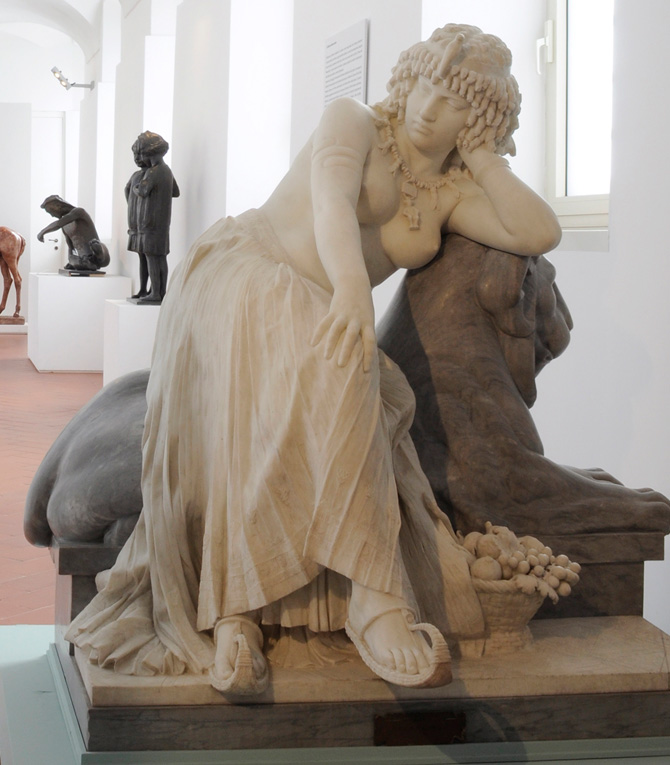Golden decorated disc of gold-foil from the tumuli 1800-1300 BCE
"The Tumulus culture (German: Hügelgräberkultur) dominated Central Europe during the Middle Bronze Age (c. 1600 to 1200 BC).
It was the descendant of the Unetice culture. Its heartland was the area previously occupied by the Unetice culture besides Bavaria and Württemberg. It was succeeded by the Late Bronze Age Urnfield culture.
As the name implies, the Tumulus culture is distinguished by the practice of burying the dead beneath burial mounds (tumuli or kurgans).
In 1902, Paul Reinecke distinguished a number of cultural horizons based on research of Bronze Age hoards and tumuli in periods covered by these cultural horizons are shown in the table below. The Tumulus culture was prevalent during the Bronze Age periods B, C1, and C2. Tumuli have been used elsewhere in Europe from the Stone Age to the Iron Age; the term "Tumulus culture" specifically refers to the South German variant of the Bronze Age. In the table, Ha designates Hallstatt. Archaeological horizons Hallstatt A–B are part of the Bronze Age Urnfield culture, while horizons Hallstatt C–D are the type site for the Iron Age Hallstatt culture.
The Tumulus culture was eminently a warrior society, which expanded with new chiefdoms eastward into the Carpathian Basin (up to the river Tisza), and northward into Polish and Central European Únětice territories. The culture's dispersed settlements centred in fortified structures. Some scholars see Tumulus groups from southern Germany in this context as corresponding to a community that shared an extinct Indo-European linguistic entity, such as the hypothetical Italo-Celtic group that was ancestral to Italic and Celtic. This particular hypothesis, however, conflicts with suggestions by other Indo-Europeanists. For instance, David W. Anthony suggests that Proto-Italic (and perhaps also Proto-Celtic) speakers could have entered Northern Italy at an earlier stage, from the east (e.g., the Balkan/Adriatic region)."
-taken from Wikipedia
It was the descendant of the Unetice culture. Its heartland was the area previously occupied by the Unetice culture besides Bavaria and Württemberg. It was succeeded by the Late Bronze Age Urnfield culture.
As the name implies, the Tumulus culture is distinguished by the practice of burying the dead beneath burial mounds (tumuli or kurgans).
In 1902, Paul Reinecke distinguished a number of cultural horizons based on research of Bronze Age hoards and tumuli in periods covered by these cultural horizons are shown in the table below. The Tumulus culture was prevalent during the Bronze Age periods B, C1, and C2. Tumuli have been used elsewhere in Europe from the Stone Age to the Iron Age; the term "Tumulus culture" specifically refers to the South German variant of the Bronze Age. In the table, Ha designates Hallstatt. Archaeological horizons Hallstatt A–B are part of the Bronze Age Urnfield culture, while horizons Hallstatt C–D are the type site for the Iron Age Hallstatt culture.
The Tumulus culture was eminently a warrior society, which expanded with new chiefdoms eastward into the Carpathian Basin (up to the river Tisza), and northward into Polish and Central European Únětice territories. The culture's dispersed settlements centred in fortified structures. Some scholars see Tumulus groups from southern Germany in this context as corresponding to a community that shared an extinct Indo-European linguistic entity, such as the hypothetical Italo-Celtic group that was ancestral to Italic and Celtic. This particular hypothesis, however, conflicts with suggestions by other Indo-Europeanists. For instance, David W. Anthony suggests that Proto-Italic (and perhaps also Proto-Celtic) speakers could have entered Northern Italy at an earlier stage, from the east (e.g., the Balkan/Adriatic region)."
-taken from Wikipedia
 |
| Golden decorated disc of gold-foil from the tumuli at Dýšina near Nová Huť (Pilsen District). Bohemian-Palatinate (Czech-Pfalz) tumule culture, 1800-1300 BC. Museum of Western Bohemia in Pilsen. |
Quote:


Comments
Post a Comment